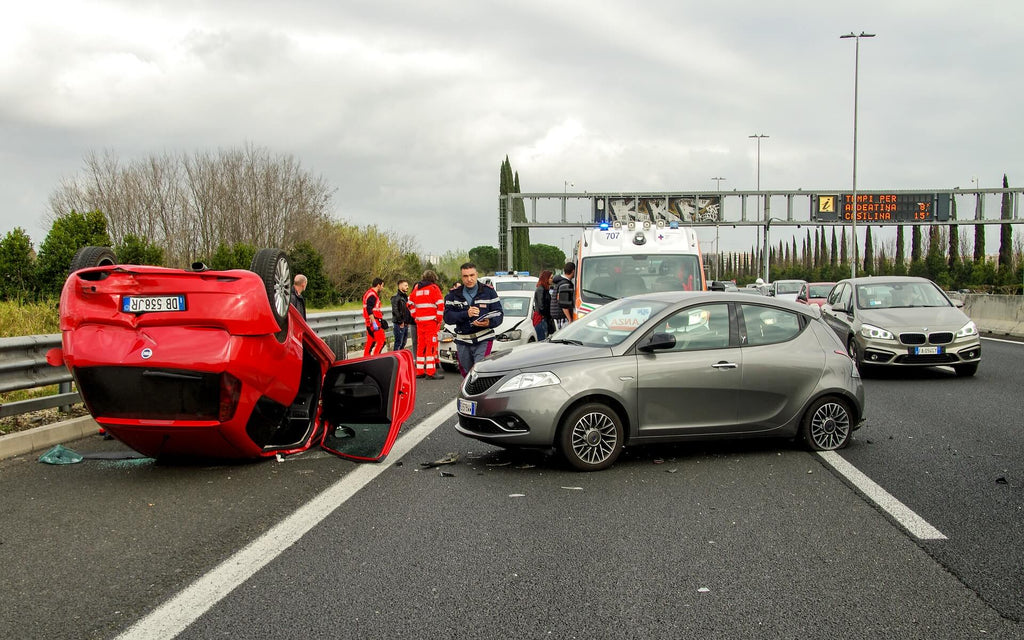Providing help in emergency situations - this is how you behave correctly in an emergency

" When every second counts " - for many people this probably sounds like just another cliché that they have heard countless times on television and radio. The phrase is sometimes used so often that they no longer really internalise the actual message and the truth behind it, but rather quickly push it aside with the other clichés. The panic and turmoil is usually great when fate throws a wrench in your wheels and you find yourself in a genuine emergency situation within a few moments. When the adrenaline is rising, injured people are screaming for help and debris is scattered everywhere, you usually know within just a few seconds that this hastily dismissed phrase contains a lot of truth.
Helping is not difficult and you don't have to be a professional to do basic things in the right direction in such situations. This is not about behaving like a chief physician or paramedic at the scene of an accident, but rather about creating the basic framework that will enable the emergency services to provide care safely and quickly later on. WOLFGANGS shows you how you can provide effective help in an emergency situation.
adequately secure the accident site
Nothing is more dangerous than rushing into an already existing danger. Even if it is only meant kindly and your pulse beats forward at such a moment, it is still important to slow down at all times to avoid something worse. Accident sites are usually difficult to survey and chaotic. The untrained eye in particular is often overwhelmed by detailed images of this category, so this poses a real risk.
By securing an accident site, you are not only protecting yourself and the person seeking help at the scene of the accident , but you are also actively helping to prevent other road users from being put in danger. Put on a safety vest if you have one so that you can move around safely. Also place a warning triangle at a sufficient distance from the scene of the accident so that other road users are made aware of the prevailing situation.
You can use hand signals to alert other cars to drive slowly. During an emergency at night, you should also remember the poor lighting conditions and activate your hazard lights accordingly. Guardrails can also have a protective function, as you can move perfectly behind them.

Rescue injured people from the danger zone
The term " danger zone " has a wide range of meanings and can therefore take on a variety of different forms during an accident. No matter what the circumstances on site may be, one fact remains irrevocable and should always be kept in mind - injured people must always be carefully rescued from the danger zone!
Cars in particular pose a high risk after an accident. Smoking or even burning engines, leaking oil and petrol, or defective electrical components must be taken into account so that everyone involved is not catapulted into an even greater danger situation. The car engine should always be turned off immediately by turning the key to the left and then leaving it in the ignition. If you have one, you should also always take a fire extinguisher with you so that you can react quickly and efficiently if the worst happens. Powder extinguishers, for example, are not only helpful for burning cars, they can also be used on burning people. It is important to note that the extinguisher's spray device should not be aimed at the person's face.
When it comes to airbags, you should also adopt a more defensive attitude when approaching the car's danger zone. Always try to avoid the deployment area or keep your distance from it. The risk of injury and the force of an airbag that deploys too late should not be underestimated and should always be kept in mind during a rescue operation.
How to make an emergency call correctly in emergency situations
Keep calm! That's the short and direct way to describe the golden rule of conduct when it comes to making a proper emergency call. It is important for the emergency services on the phone to get as much information as possible in order to then initiate the appropriate rescue steps. Hectic or hysterical behavior can disrupt this important process. This in turn could lead to a fatal result for the person involved in the accident. " Every second counts " - even on the phone!
Usually, you will be confronted with several questions over the phone that need to be answered quickly and accurately. " What exactly happened at the scene of the accident ?", " How many people are involved in the accident ?", or " What injuries do those involved have ?" could be some of the questions that will bombard you in such a moment.
Try to be as exact and precise as possible when answering the questions . Even if you don't have a direct answer to some of the questions, even small clues can be worth their weight in gold. For example, pay attention to street names or buildings in the immediate vicinity and pass this on as best as you can.
Also, always make sure that the call is only ended by the control center. Nothing would be worse than ending a call too early and having the emergency services arrive with unanswered questions. Stay calm and listen to the voice on the phone. It will clearly signal to you when there are no more unanswered questions and the call can be ended.






